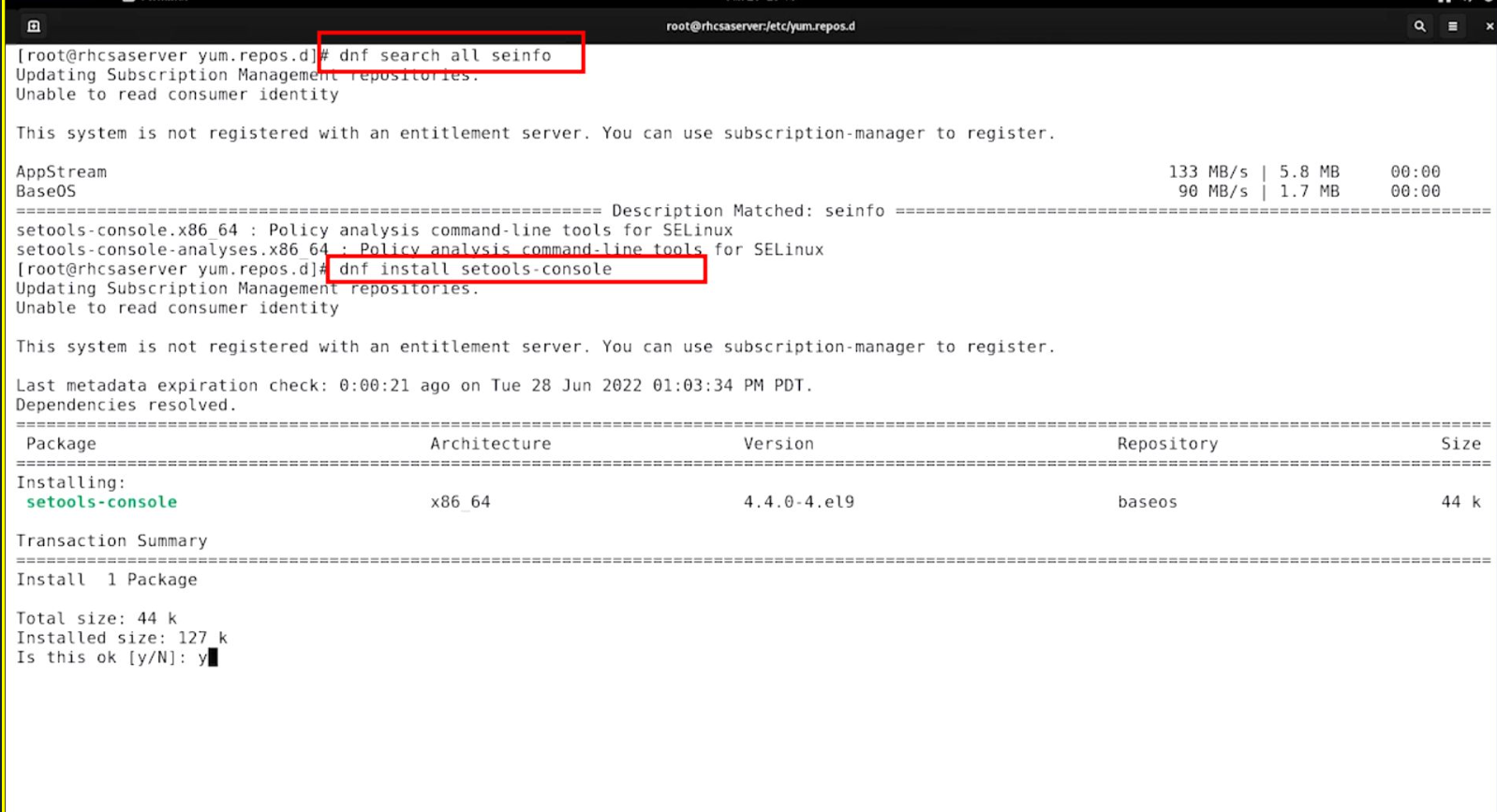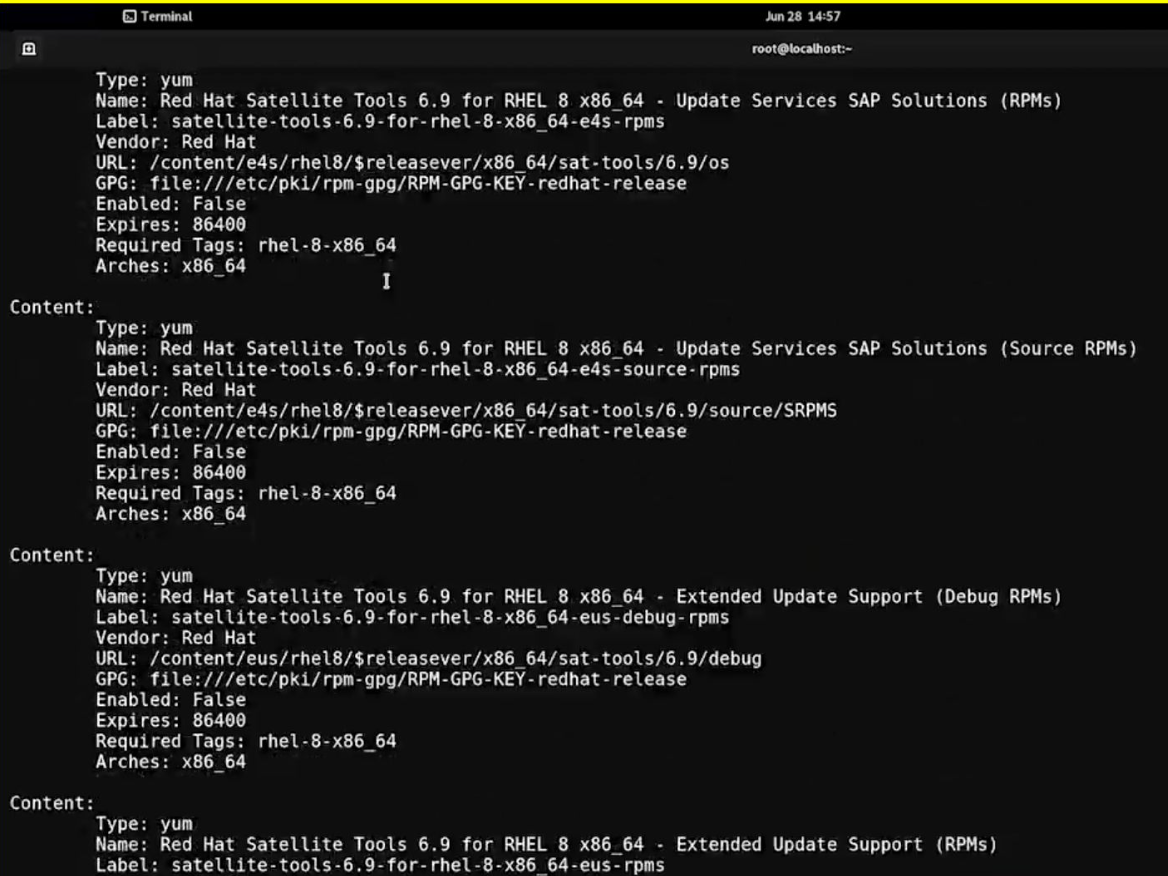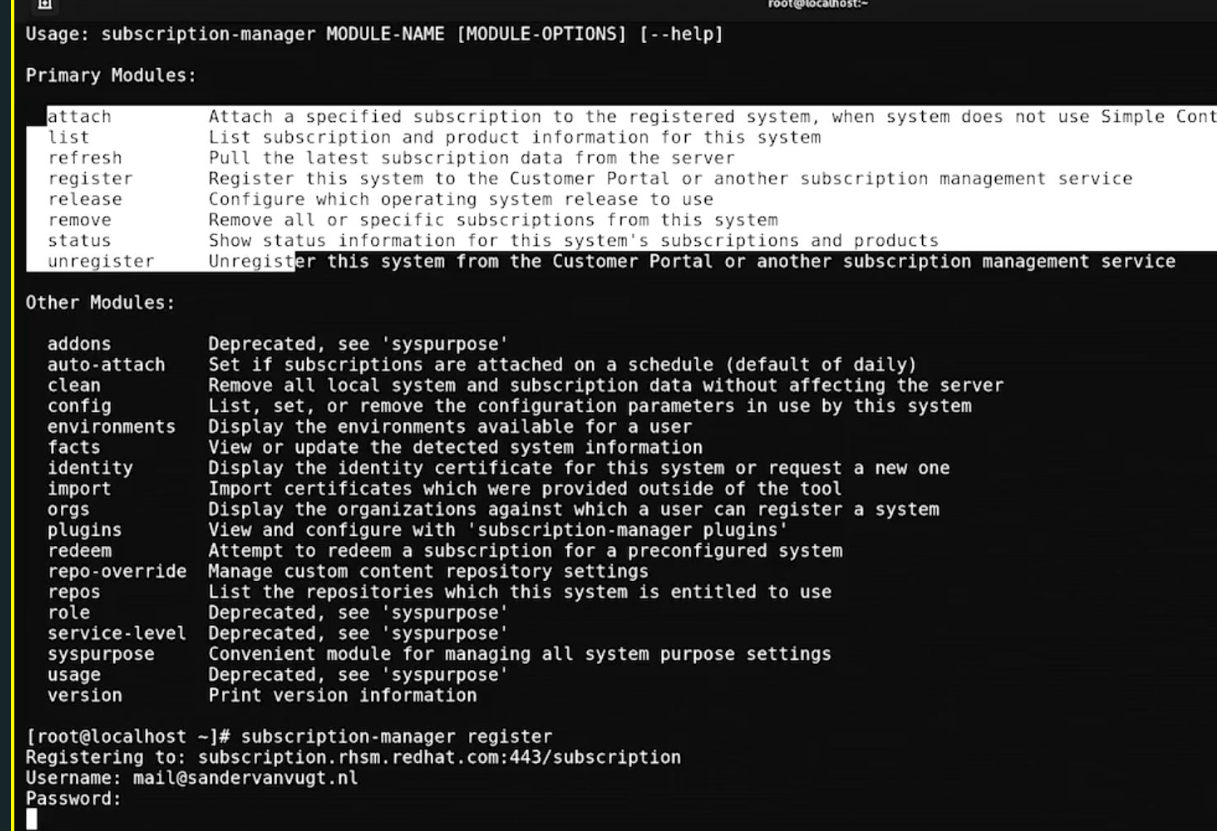- dnf was created to be intuitive
dnf listdnf listlists installed and available packages
dnf list 'selinux*'- dnf search searches in name and summary. Use dnf search all to search in description as well
- dnf search seinfo
- dnf search all seinfo
- dnf provides searches in package file lists for the package that provides a specific file
dnf provides */Containerfile
- `dnf info shows information about the package

Groups
-
A dnf group is a collection of packages
-
A regular group is just a collection of packages
-
An environment group is used to install a specific usage pattern, and may consist of packages and groups
-
Use dnf group list to see a list of groups
-
Some groups are normally only installed through environme groups and not separately, and for that reason don’t show using dnf group list
-
Use dnf group list hidden to see these groups as well
-
to see packages within a group
dnf group info <groupName>- Packages are marked as
- mandatory
- default
- optional
dnf group install <groupName>- While using dnf group install, only mandatory and default packages are installed
- To install optional packages also, use
dnf group install --with-optionalSubscription
-
After attaching subscriptions to a system, entitlement certificates are created
-
/etc/pki/productindicates the installed Red Hat products -
/etc/pki/consumeridentifies the Red Hat account for registration
/etc/pki/entitlementindicates which subscription is attached
-
-
Use the
rctcommand to check current entitlements
rct cat-cert /etc/pki/entitlement/xyxxxyyzzz.pem
- if you haven’t register then this error will apeare


unregister
subscription-manager unregisterAccess repositories offered through subscription manager
dnf config-manager --enable <name-of-repository>Yum
- To access repositories that are offered through subscription manager, use
dnf config-manager --enable <name-of-the-repository>to add repository access
- Third party repositories can be added using a repo file in /etc/yum.repos.d/, or using dnf config-manager
dnf config-manager --add-repo="file:///repo/AppStream"
cat >> /etc/yum.repos.d/AppStream.repo <<EOF
> [AppStream]
> name=AppStream
> baseurl=file:///repo/AppStream
> gpgcheck=0
EOFAbstract